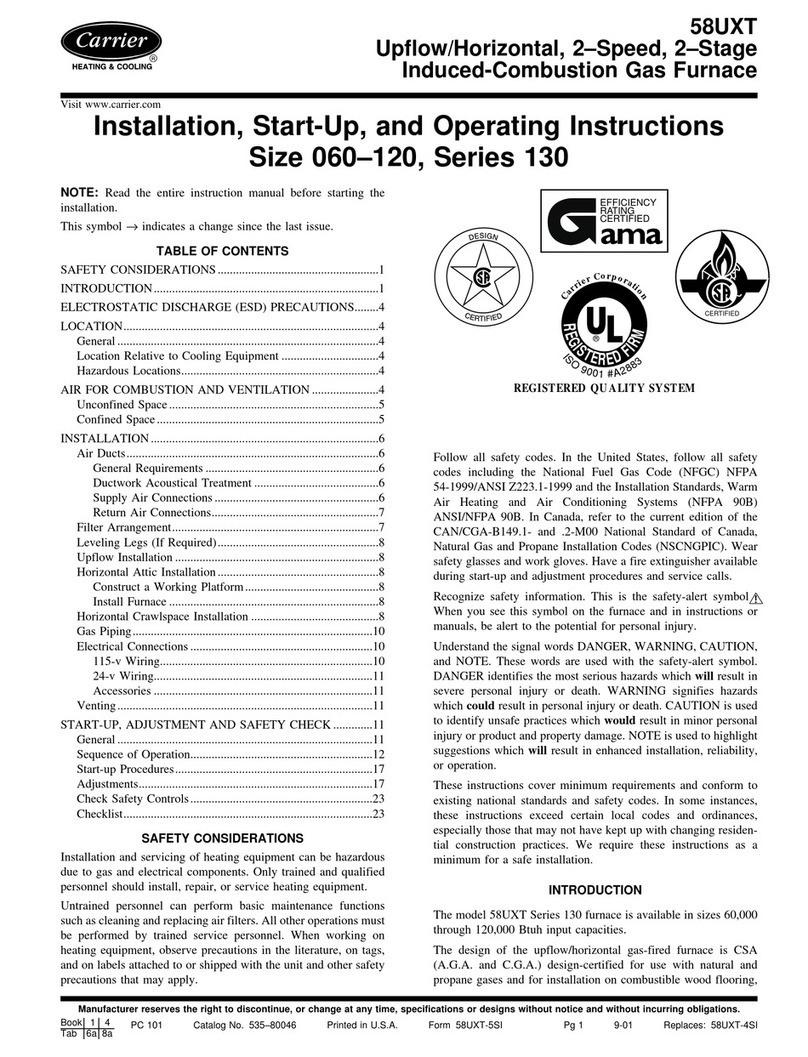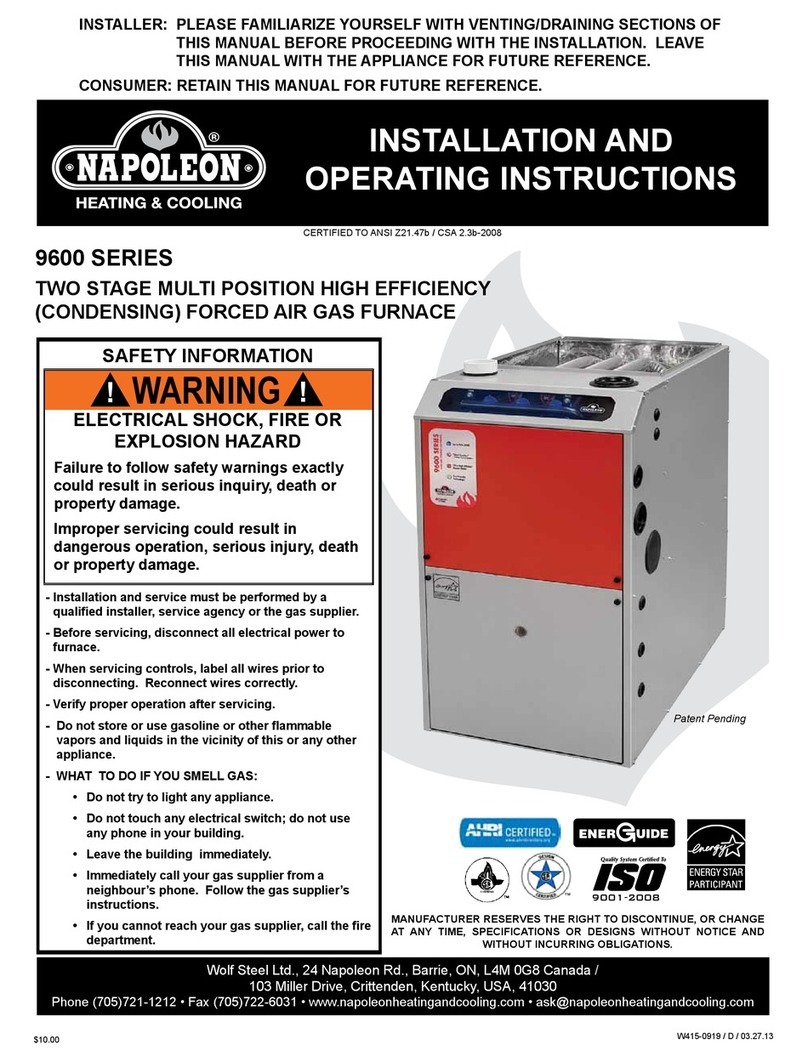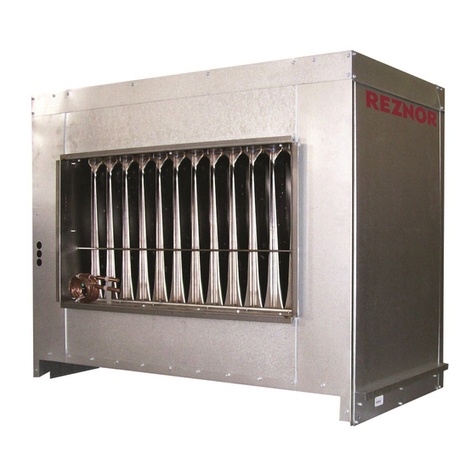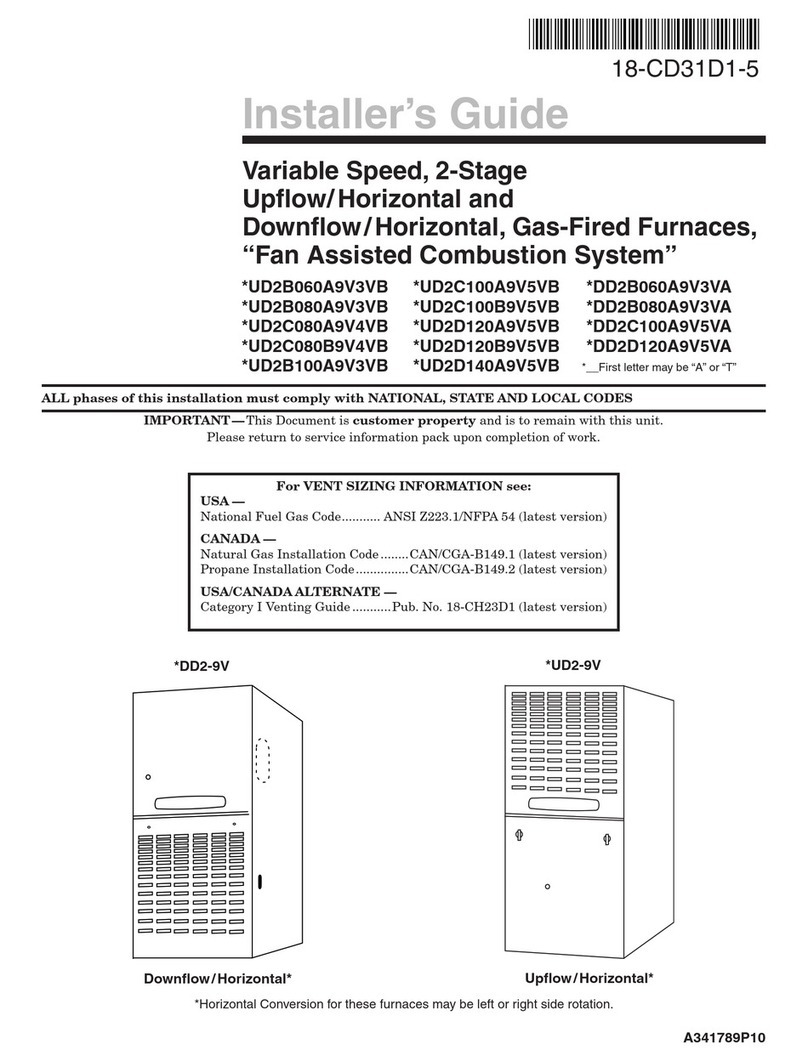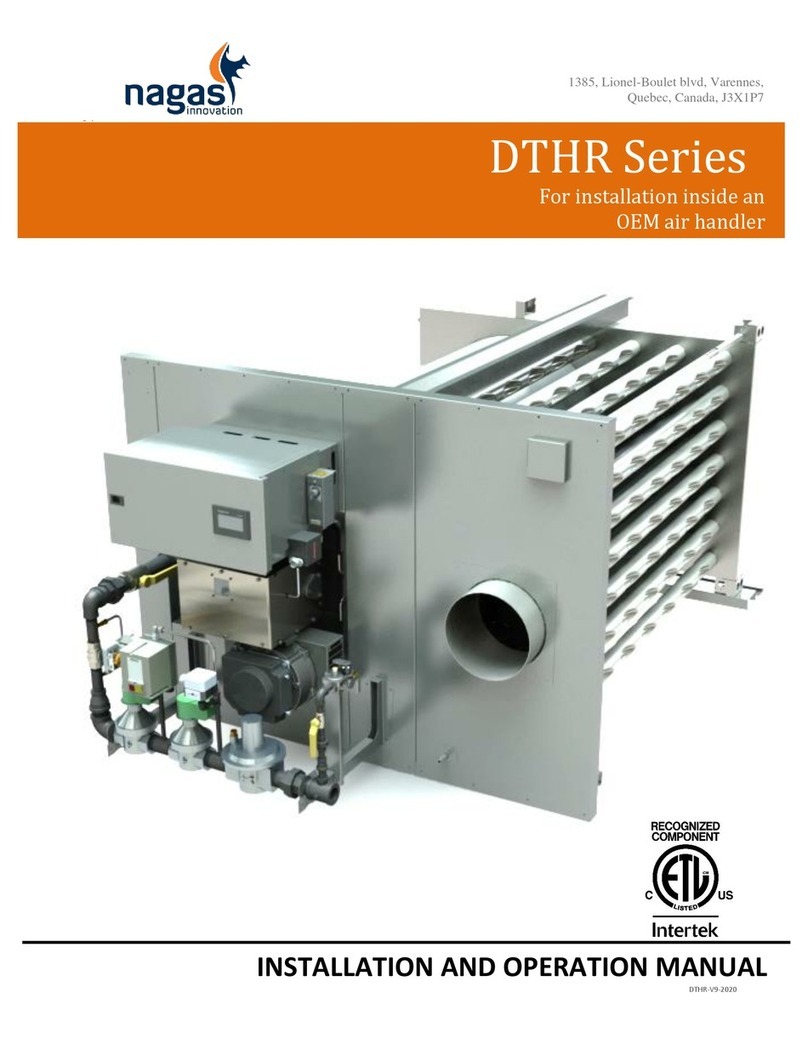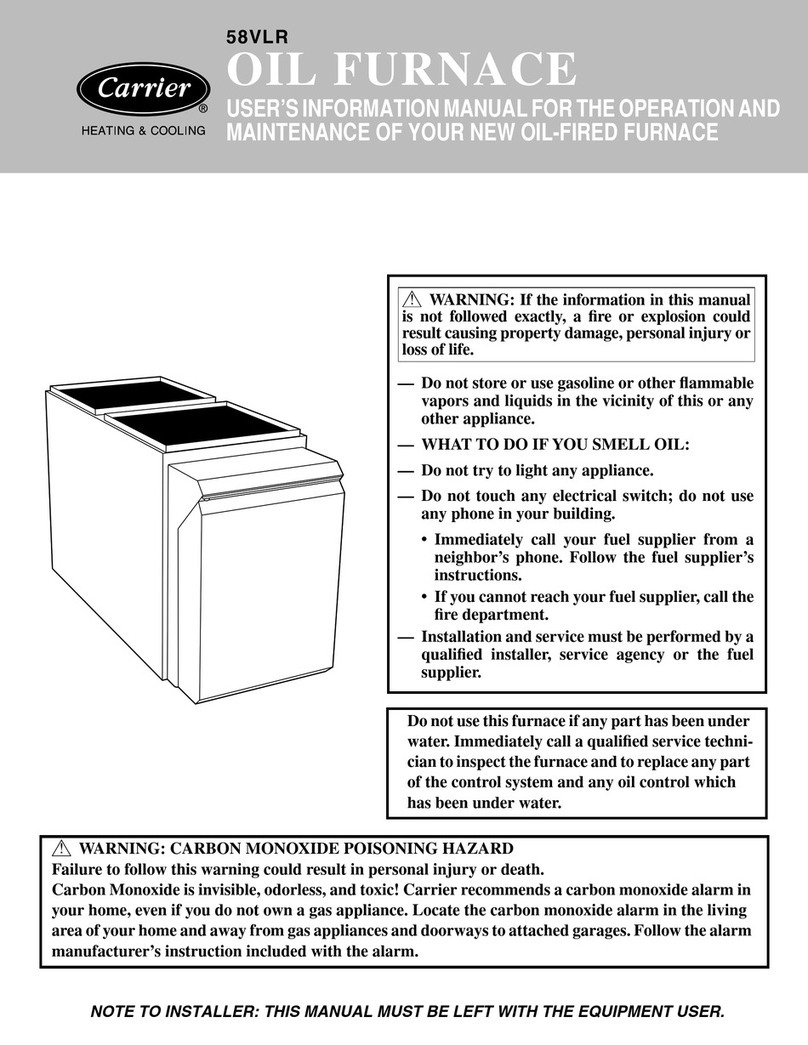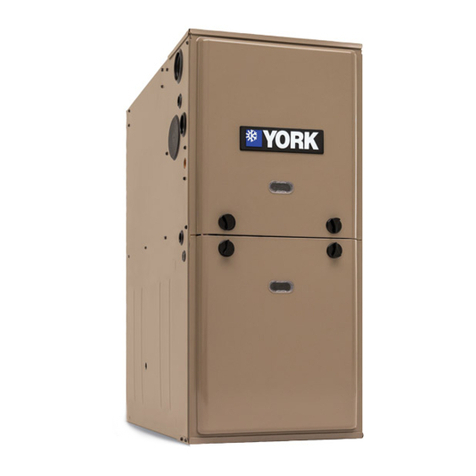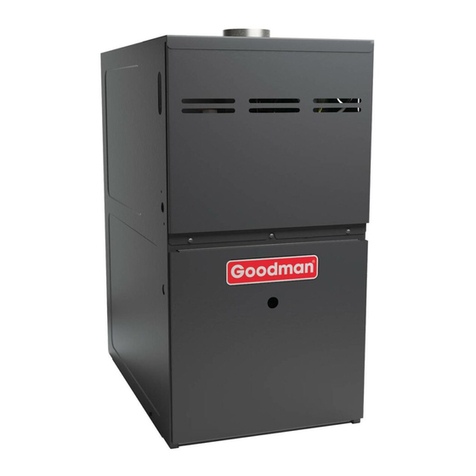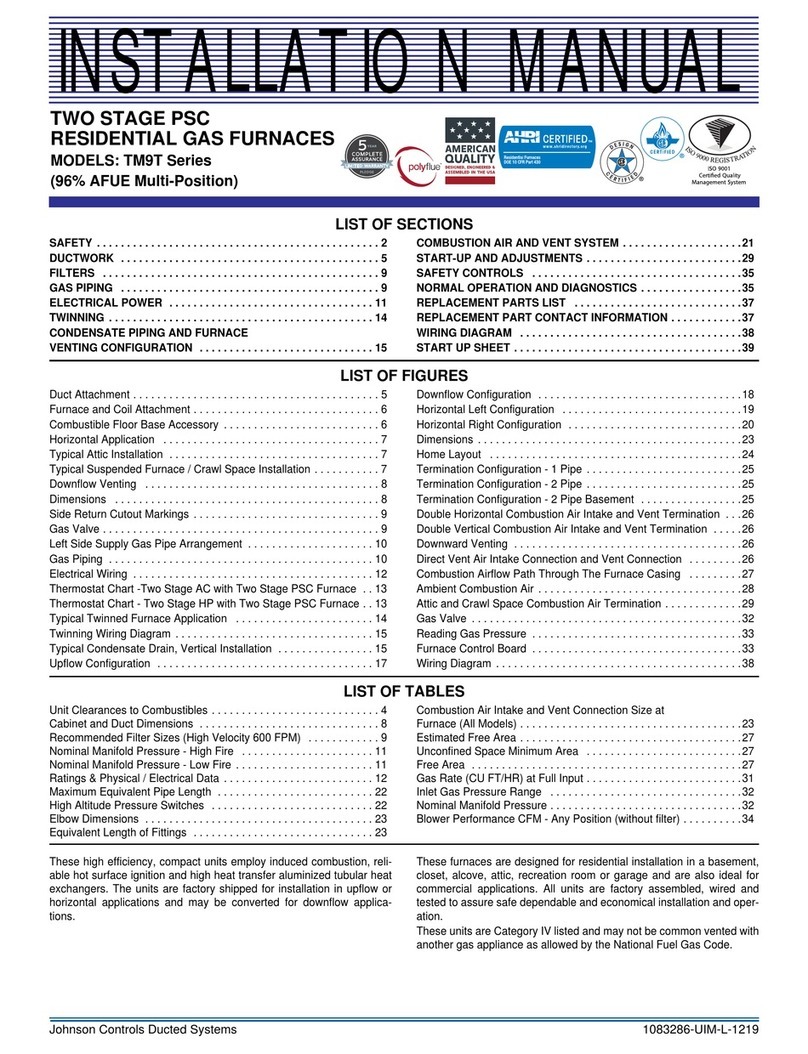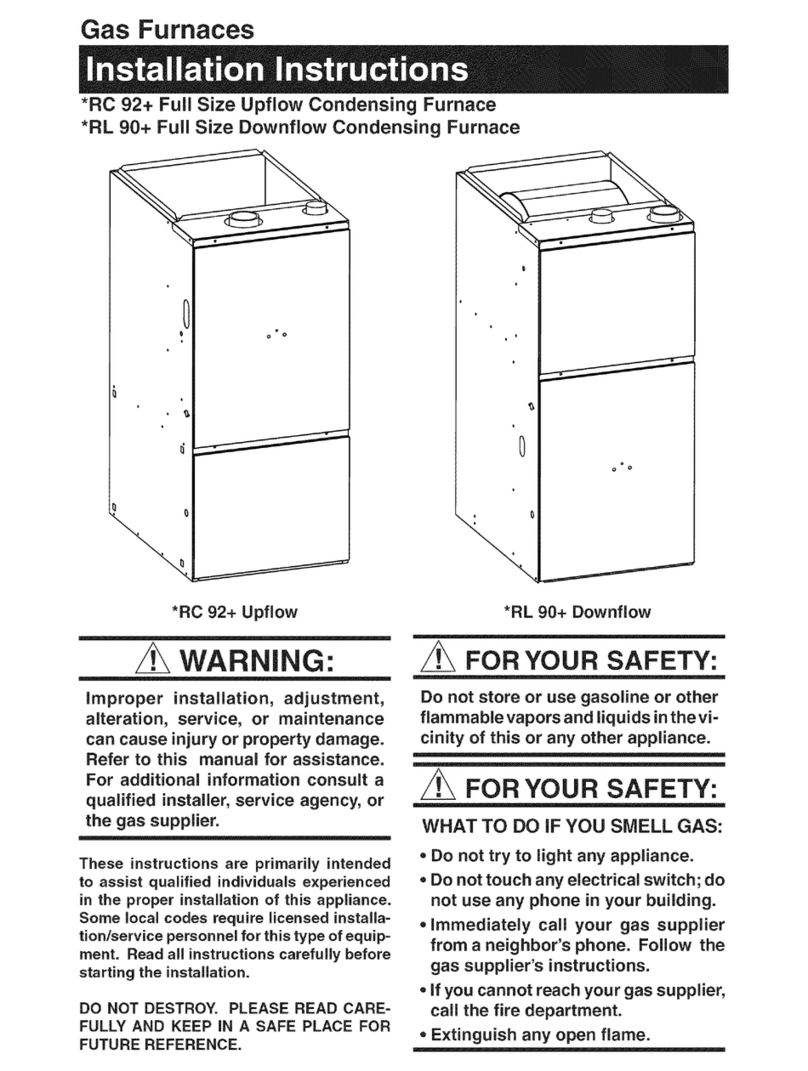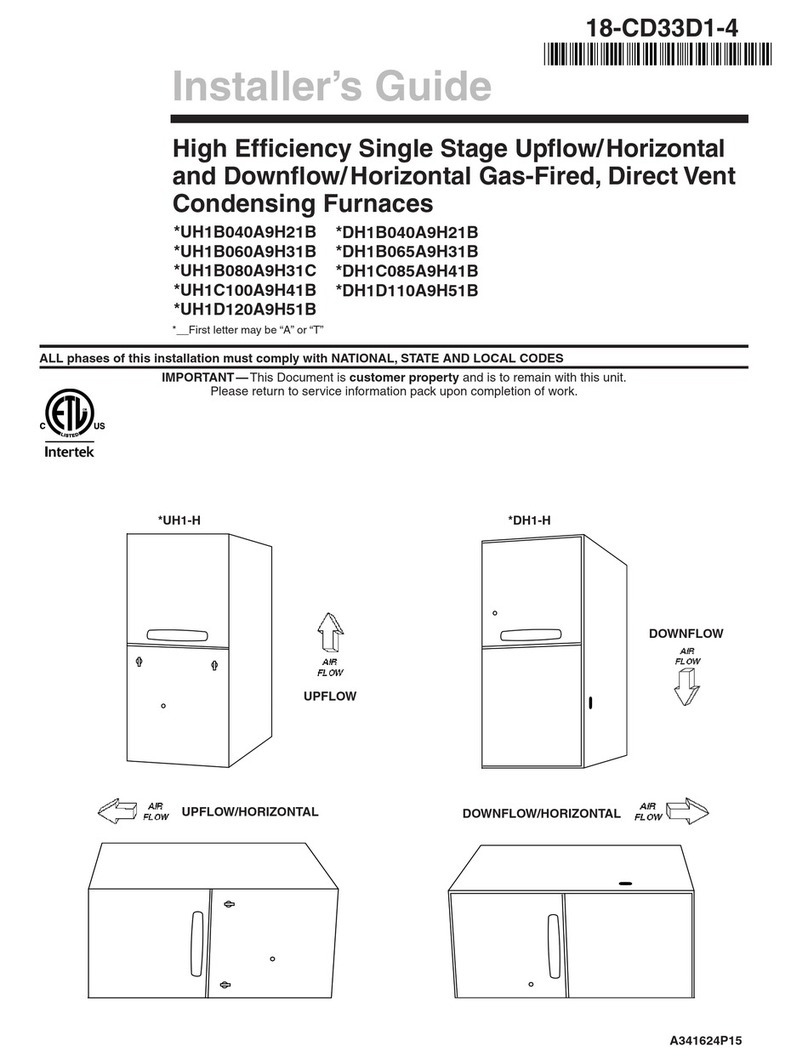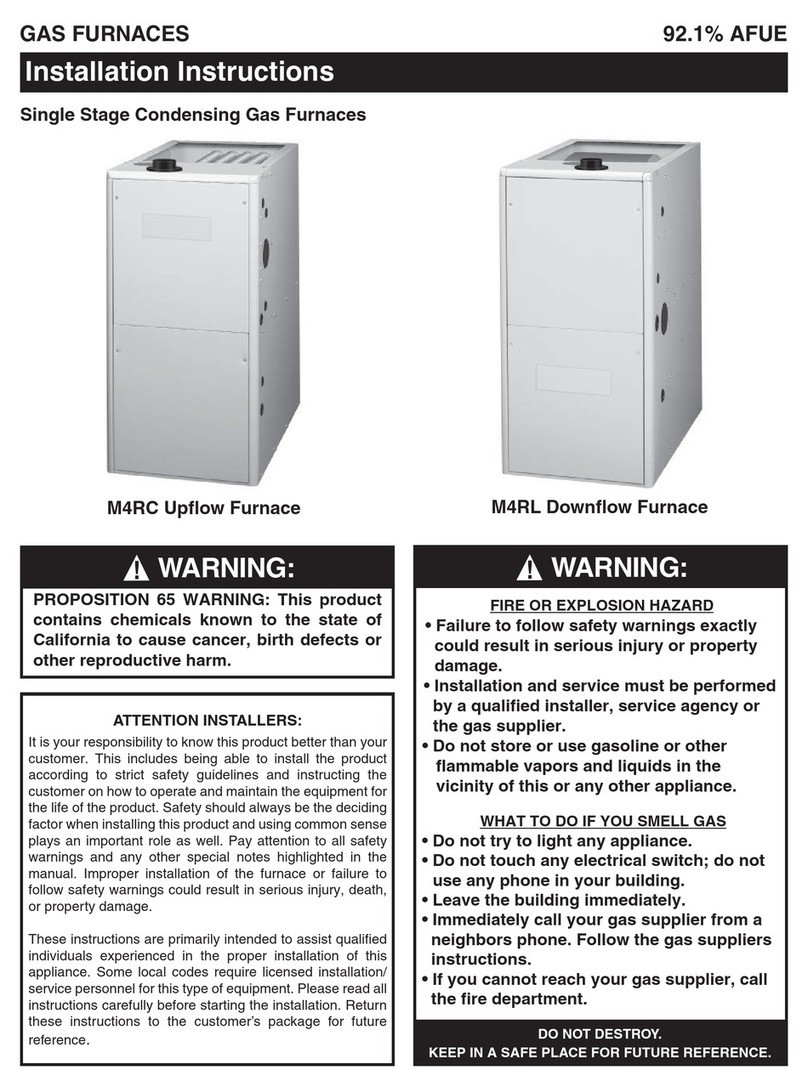8
Install the stovepipe as far as possible into
the thimble, but not past the inside of the
ue lining. ere should be a small air
space (approximately 1/2 in.) between the
stovepipe and thimble, allowing for expan-
sion of the stovepipe. Seal this airspace with
high-temperaturecaulkingorceramicwool.
Finally, be sure to wire the damper closed
and apply the same sealant you used at the
stovepipe and thimble junction.
Do not vent up through the replace open-
ing, regardless of whether the replace
opening is closed.
MASONRYCHIMNEYhaveseveralpositive
attributes: If properly built, they are quite
durable, and most homeowners consider
them more attractive perhaps than a non-
enclosed factory built chimney. And, if the
chimneyis locatedwithinthe connesofthe
house (that is, not attached to an exterior
wall), its mass alone will store heat longer
and continue to release the heat long aer
the re has died. Masonry chimneys have
many disadvantages though.
Masonry chimneys constructed on an
exterior wall are exposed to cold outdoor
temperatures, promoting greater heater
loss, higher accumulations of creosote, and
reduced dra which leads to poorer heater
or furnace performance.
FIREPLACE INSTALLATION
Connectionofthestovepipedirectlyintothe
existingmasonrychimney overthereplace
opening is the only approved method. is
installation performs better, yielding easy
to clean and inspect for creosote. Before
beginning this type of installation plan
carefully; a high degree of skill is required
to insure safety.
An entry port for the stovepipe must be cut
throughthechimneywithminimumdamage
tothere clay liner.Someinvolved measure-
mentsmayberequiredtolocatethe ue liner
exactly.Beforecutting,taketime tomarkthe
size and position of the entry port. Position
the entry port so that at least 8 inches of the
ue liner remains below the port.
Keep in mind that wood mantels and com-
bustible trim around the replace must
have adequate clearances from the heater
and stovepipe or must be protected in an
approved manner. Also, be sure to leave at
least 24" clearance between the top of the
stovepipe and the combustible ceiling or
other combustibles. Placing the center of
the entry port 2 feet below the ceiling will
insure proper clearance for 6 inch, 8 inch,
and 10 inch stovepipes. Next, install a re
clay (at least 5/8 in. thick) or metal thimble,
being sure that the thimble is ush with the
inneruelining. Securethe thimbleinplace
with refractory mortar. e thimble should
be surrounded on all sides with 8 inches
of brickwork (solid masonry units) or 24
inches of stone.
CAUTION
A chimney re may cause ignition of wall studs or raers which you thought were safe
distance from the chimney. If you have a chimney re, have your chimney inspected by
a qualied person before using again.
Do not expect a heater to draw. It is the
chimneythatcreatesthe dra. Smokespillage
intothehouse orexcessivebuild-upofwater
orcreosoteinthe chimney arewarnings that
the chimney is not functioning properly.
Possible causes are:
1. e connection pipe may be pushed
into the chimney too far, stopping the dra
(Fig. 8).
2. Two heaters connected into the same
chimney ue.
3. Sameuebeing usedto ventilatethecellar
or basement. If there is a cleanout opening
at the base of the chimney, it must be closed
tightly and sealed.
4. If the chimney is too cool, water will con-
dense in the chimney and run back into the
stove. Creosote formation will be rapid and
may block the chimney. Operate the heater
at a high enough re to keep the chimney
warmpreventing thiscondensation.(Poorly
insulated chimney)
5. e chimney top may be lower than
another part of the house or a nearby tree.
e wind blowing over a house or a tree
falls on top of the chimney like water over a
dam,beatingdownthe smoke.etopofthe
chimney should be at least 3 feet higher than
any point of the roof within 10 feet (Fig. 6).
6. Otherchimney/ueinadequaciescovered
else where in this manual.
If creosote has accumulated, it should be
removed.
Failuretoremovecreosoteorsoot may cause
a house re. Creosote may be removed by
using a chimney brush or other commonly
available materials. Or, better yet, by a certi-
ed chimney sweep.
Chimney res burn very hot. If the chimney
connectorshouldglowred,immediatelycall
the re department, then reduce the re by
closing the inlet air control and closing the
damper in the pipe.
CHIMNEY MAINTENANCE
CREOSOTE-FORMATION AND NEED FOR REMOVAL
NOTE:
A dra reading of .05 to .06 w.c. is suggested for proper burning of this unit.
SERVICE HINTS
13
Whenwood is burnedslowly,itproducestar
and other organic vapors, which combine
withexpelled moisturetoformcreosote. e
creosote vapors condense in the relatively
cool chimney ue of a slow burning re.
As a result, creosote residue accumulates on
the ue lining. When ignited, this creosote
makes an extremely hot re.
echimneyconnectorandchimneyshould
be inspected at least twice monthly during
the heating season to determine if a creosote
build-up has occurred.
Toll-Free 1-866-667-8454
NorthlineExpress.com www.NorthlineExpress.comwww.NorthlineExpress.com










